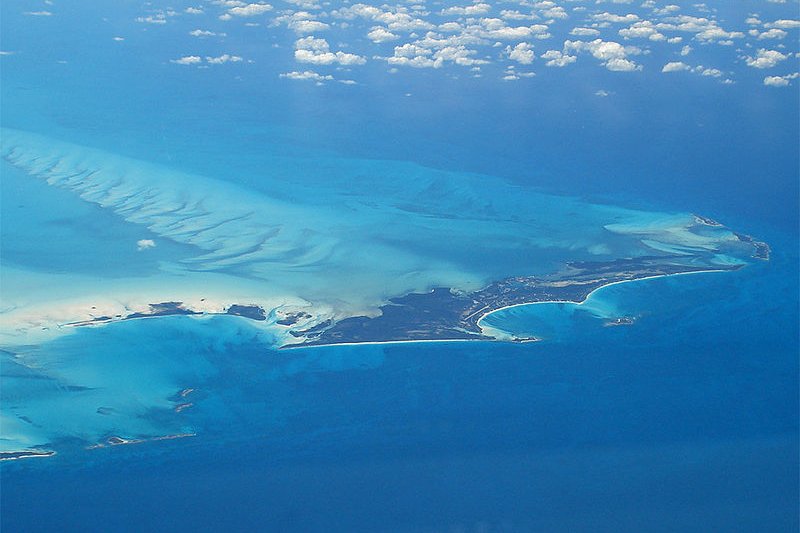 Grand Harbour Cay, the Bahamas
Grand Harbour Cay, the BahamasSource: https://commons.wikimedia.org/wiki/File:Grand_Harbour_Cay.jpg
Author: SempreVolando

The Bahamas or officially the Commonwealth of the Bahamas is an island nation located in the Atlantic Ocean. It comprises 29 main islands, 661 cays and 2,387 islets, covering a total land area of 13,939 sq km (5,382 sq mi). The Bahamas is located north of Cuba, northwest of the Turks and Caicos Islands, and southeast of Florida.
The Bahamas has a population of 330,000 (2011 estimate). Its capital and largest city is Nassau, located non the island of New Providence. The name "Bahamas" come from Bahama, which is derived from the Spanish baja mar, meaning "shallow seas".
Brief History of the Bahamas
Historically, the Bahamas was once inhabited by the Lucayans, an Arawak-speaking tribe of Taino people. It was the first landfall in the New World for Christopher Columbus in 1492. The Spanish captured some of the Lucayans and took them as slaves to the island of Hispaniola. The Bahamas was deserted from 1513 until 1648, when British colonist from Bermuda settled there.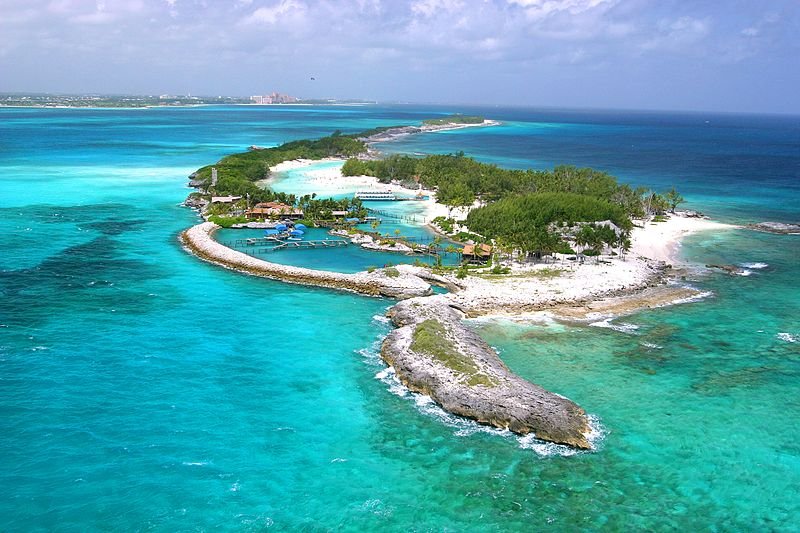 Blue Lagoon Island, the Bahamas
Blue Lagoon Island, the BahamasSource: https://commons.wikimedia.org/wiki/File:Blue_Lagoon.JPG
Author: Dolphins

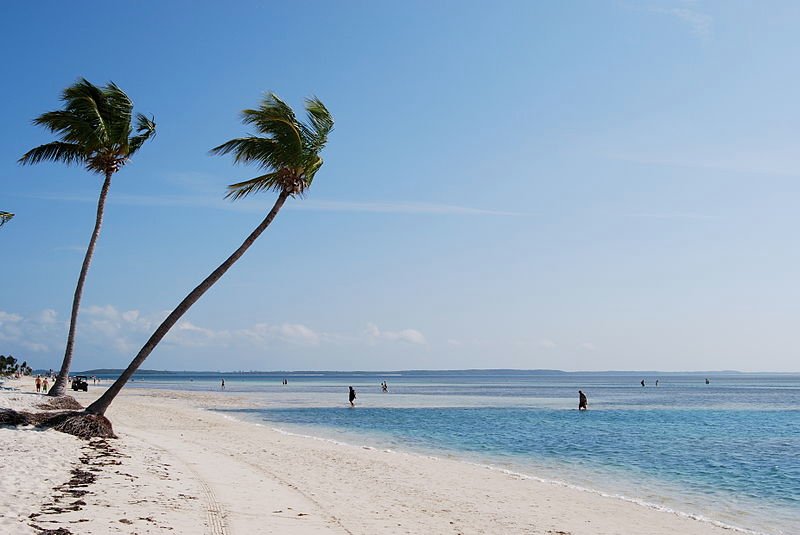 Coco Cay Beach, the Bahamas
Coco Cay Beach, the BahamasSource: https://commons.wikimedia.org/wiki/File:CocoCayBeach.JPG
Author: UpstateNYer

The Bahamas became the Crown Colony in 1718. It received an influx of pro-British loyalist and enslaved Africans during the American War of Independence. Following the abolishment of slave trading in the British Empire in 1807, many former slaves were settled in the Bahamas. Today the descendants of these liberated Africans form the majority of the Bahamas's population.
Economy of the Bahamas
Today the economy of the Bahamas is supported by tourism and offshore finance. The island experiences a climate that ranges from subtropical to tropical. The Gulf Stream moderates the temperature, most significantly in winter. The same Gulf Stream is the source of many hurricanes that happens in the Bahamas during summers and autumns.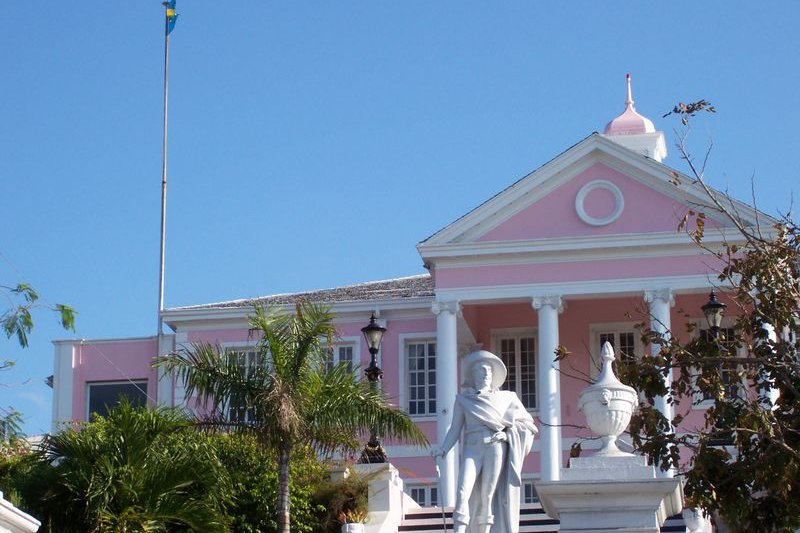 Government House, Nassau
Government House, NassauSource: https://commons.wikimedia.org/wiki/File:Bahamas_Government_House.jpg
Author: Crm18

Climate of the Bahamas
The temperature in the Bahamas is quite uniform throughout the year. The warmest months are July and August, when average high temperature reaches 31.8°C (89.2°F). The lowest temperatures of the year is usually in January or February, when it may drop to 16.7°C (62.1°F). The wettest months and June and August, when rainfall of the month totals 215.9 mm (8.9 in) or more.Public Holidays in the Bahamas
The following are public holidays observed in the island of the Bahamas:- New Year's Day: 1 January. This is where the islands takes on a festive mood, and Junkanoo Parades are staged in many towns on the islands.
- Good Friday: The Friday before Easter Sunday. This is the start of the Easter weekend that includes a public holiday on the following Monday. Fish is served as the main meal of most church-going Bahamians.
- Easter Monday: The Monday after Easter Sunday. This is the final day of the Easter weekend. It is usually spend going for picnics and cookouts, such as on the Nassau waterfront. It's a good time to see the locals enjoying themselves.
- Whit Monday: Monday following Easter Monday. Also called Pentecost Monday, this public holiday marks the public witness of the Christian church.
- Labor Day: First Friday of June. This is a day when members of various labor unions hold parades in downtown Nassau to the Southern Recreation Ground.
- Independence Day: 10 July. Day commemorating the independence of the Bahamas from the United Kingdom in 1973.
- Emancipation Day: First Monday of August. This public holiday commemorates the abolishment of slavery in the British Empire on 1 August, 1834. The people celebrates with a Junkanoo parade, or going for a picnic on the beach.
- Discovery/Columbus Day: 12 October. This is the day that the Bahamians honor their departed heroes. As such, there has been a call to rename this holiday to the Bahamian Hero's Day.
- Christmas Day: 25 December.
- Boxing Day: 26 December. This is the day that the slaves received the empty gift boxes from their masters in England for their own use. Junkanoo parades are often staged on this day as well.
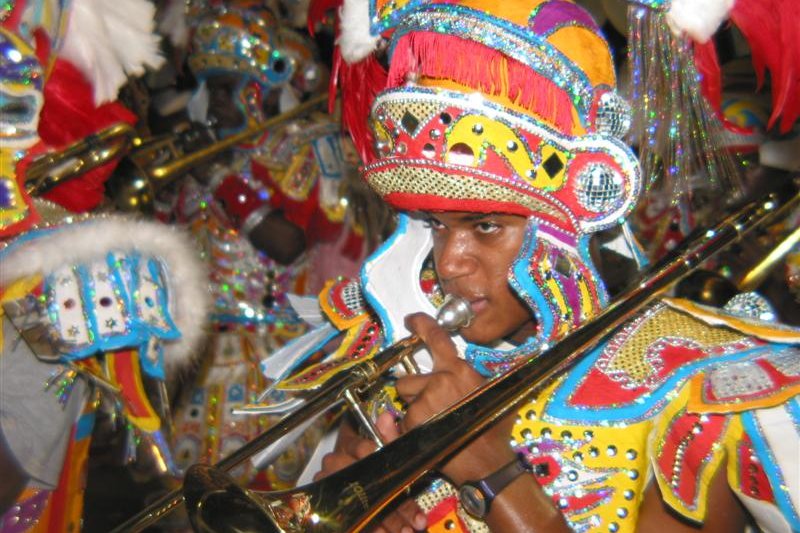 Junkanoo parade, Bahamas
Junkanoo parade, BahamasSource: https://commons.wikimedia.org/wiki/File:Junkanoo2.jpg
Author: ebodie

Junkanoo
Junkanoo is a street parade with music. It is usually held on Boxing Day and New Year's Day. The biggest Junkanoo parades are staged in Nassau, though it has also spread to other places such as the Turks and Caicos Islands, Miami and Key West. The name Junkanoo is said to be a corruption of "John Canoe". It originated in the 17th century when slaves staged their festivities.
Music of the Bahamas
The music of the Bahamian embodies elements of Caribbean Calypso, English folk songs and Afro-Caribbean music. Influence of the musical tradition from neighboring Turks and Caicos Islands is known as the rake and scrape music. This was introduced to the Bahamas in the 1920s to 1940s.The main musical instrument of rake-n-scrape is the Goombay drum, made of pork barrel and goatskin. Another unique feature of the rake-n-scrape is the use of a carpenter's saw which is scraped with a nail or butter knife to produce music. Other instruments include the accordion, and in more modern context, the electric guitar and keyboard.
Planning your visit to the Bahamas
Unless you are coming on a cruise ship, you can fly to the Bahamas and land at the airport in Nassau or Freeport. The smaller islands are also served by domestic airports.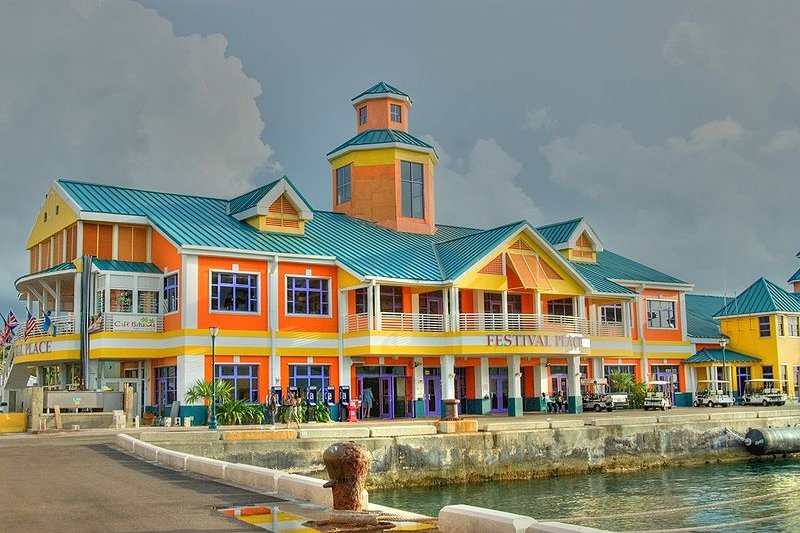 Festival Place, Nassau Harbour
Festival Place, Nassau HarbourSource: https://commons.wikimedia.org/wiki/File:Festival_Place.jpg
Author: FotoDawg

Preparing Money for your trip to the Bahamas
The currency used in the Bahamas is the Bahamian dollar (BSD).Major Cities in Bahamas
- Nassau - capital
- Alice Town
- Freeport
- Hope Town
- Marsh Harbour
- Matthew Town
Islands of the Bahamas
Here's a list of cays, islets and islands that I have described of the Bahamas.- The Abacos
- Acklins/Crooked Island
- Andros
- Berry Islands
- Bimini Islands
- Cat Cays
- Cat Island
- Eleuthera Island
- The Exumas
- Grand Bahama Island
- Great Guana Cay
- Great Harbour Cay
- Great Stirrup Cay
- Harbour Island
- Inagua
- Long Island
- Man-O-War Cay
- Mayaguana
- New Providence
- Paradise Island
- Ragged Island
- Samana Cay
- San Salvador
- Spanish Wells
Sights in the Bahamas
Museums of the Bahamas
 Latest updates on Penang Travel Tips
Latest updates on Penang Travel Tips

Copyright © 2003-2025 Timothy Tye. All Rights Reserved.

 Go Back
Go Back